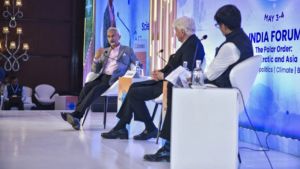Current Major Events Shaping the World
In recent months, the landscape of global events has been profoundly affected by a myriad of developments that are reshaping international relations, economies, and societal dynamics. One significant occurrence is the ongoing conflict in Ukraine, which has drawn in various nations and escalated tensions between Russia and Western powers. This conflict not only poses a humanitarian crisis but also disrupts global supply chains and contributes to rising energy prices, affecting economies worldwide.
Another pivotal event is the political shift in several countries, particularly the recent elections in Latin America, where leftist governments have gained traction. This shift signals a potential change in regional alliances and trade relations, as new administrations prioritize social reforms and domestic issues, impacting both regional neighbors and international partners. The reverberations of these political changes could influence global economic policies and lead to new diplomatic negotiations.
Additionally, natural disasters, such as the recent earthquakes in Turkey and Syria, have exposed vulnerabilities in infrastructure and emergency preparedness. The aftermath of these disasters requires coordinated international aid and has highlighted the need for global cooperation in disaster response strategies. These events serve as a reminder of the interconnectedness of nations and the importance of solidarity in addressing crises.
Moreover, significant economic fluctuations are occurring as various countries grapple with inflation and market instability post-pandemic. The geopolitical context and economic policies adopted by influential nations can lead to widespread repercussions across global markets, affecting trade dynamics and investment flows. These economic changes necessitate that countries adapt their strategies to maintain resilience and ensure sustainable growth.
In summary, these major global events illustrate the complexity of interrelations among politics, economics, and societal issues. Understanding these occurrences enhances our comprehension of how they will influence future international dynamics and emphasizes the importance of a cohesive global response.
The Role of Media in News Dissemination
The contemporary landscape of news dissemination is largely shaped by various media outlets, each playing a distinct role in delivering timely information to the public. Traditional media, which includes newspapers, television, and radio, has long been the cornerstone of news broadcasting. These outlets are generally characterized by their structured news reporting and editorial guidelines, establishing a sense of credibility and trustworthiness. However, in recent years, the rise of social media platforms has dramatically transformed the way news is consumed and disseminated.
Social media channels such as Twitter, Facebook, and Instagram have facilitated instantaneous sharing of information, allowing users to become active participants in the news cycle. This democratization of news dissemination grants individuals the ability to share updates and opinions in real-time, effectively making everyone a potential journalist. Nevertheless, this shift has also given rise to significant challenges, particularly concerning the propagation of misinformation. Unlike traditional media, which often employs fact-checking measures, social media provides an unregulated space where unverified information can spread rapidly, leading to confusion and sometimes harmful outcomes.
The accessibility of information on digital platforms is another crucial element, enabling a diverse audience to engage with multiple sources of news. This accessibility promotes a broader understanding of current events, influencing public perception and shaping individual responses to pressing issues. However, it also stresses the importance of critical consumption; not all content encountered online meets the rigorous standards of traditional journalism. To counter misinformation and biased reporting, audiences are encouraged to approach news critically, validating sources and seeking multiple perspectives before forming opinions.
In conclusion, the dual roles of traditional and social media in news dissemination illuminate the complexities of information accessibility and the responsibilities of both media producers and consumers. As we navigate this intricate landscape, fostering informed engagement with news content is essential for a well-informed public.

